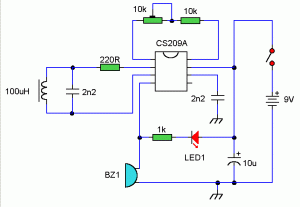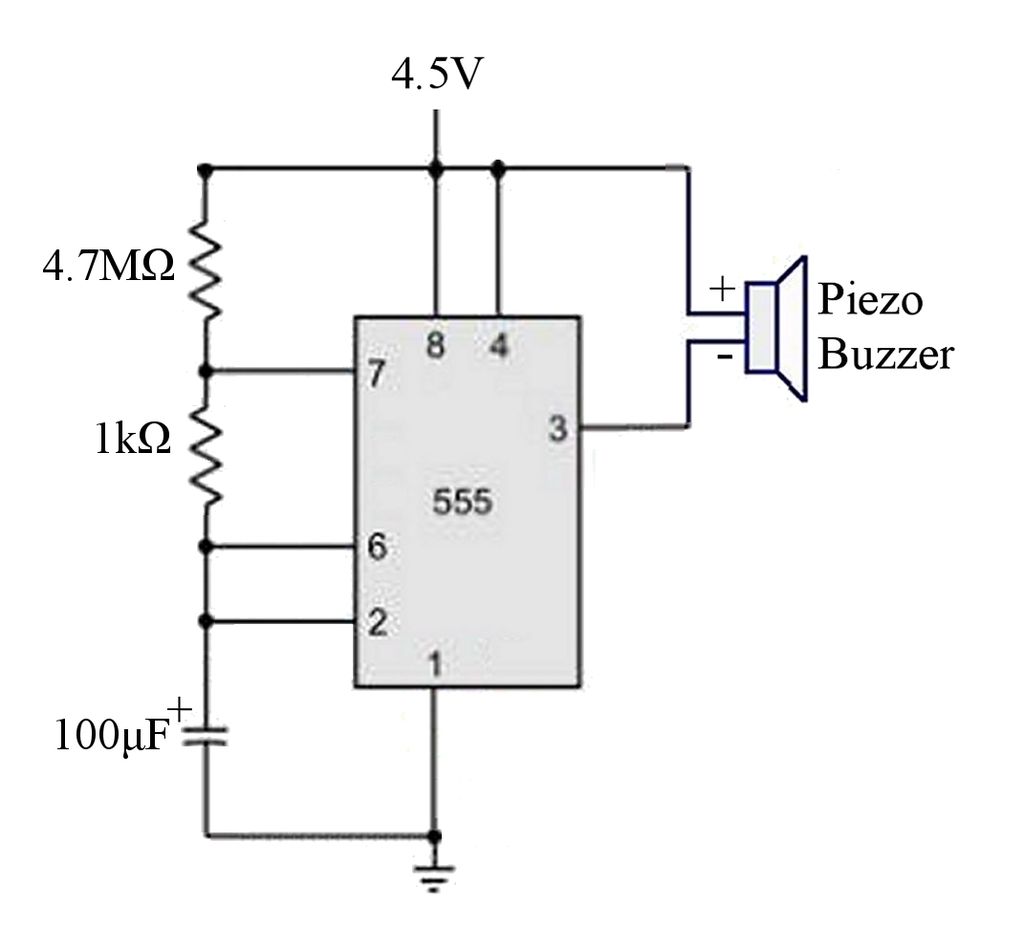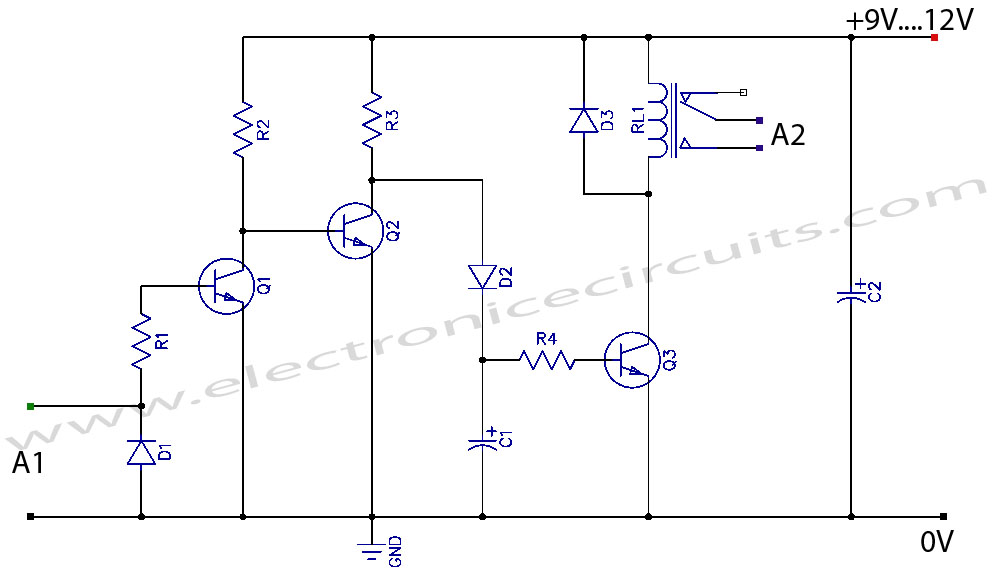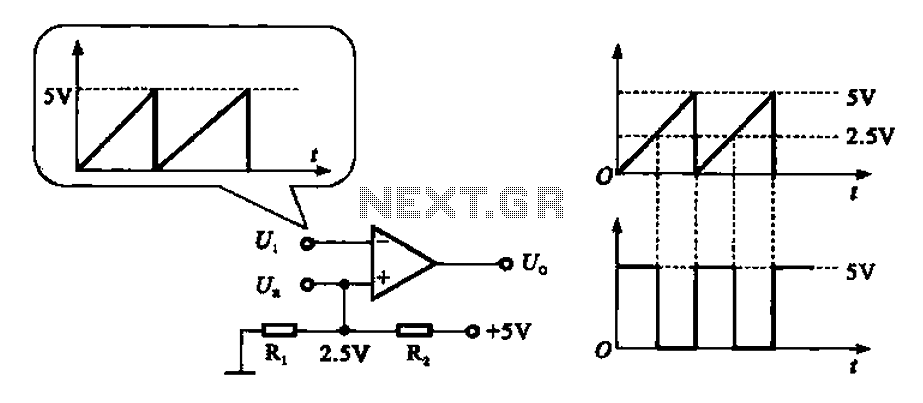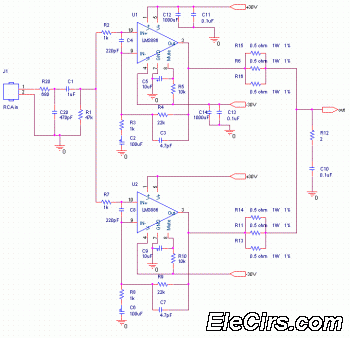
phone record circuit
This compact circuit allows for the automatic recording of phone conversations. It interfaces with the phone line, the microphone input of a tape recorder, and the remote control jack of the recorder. The circuit detects a voltage drop in the phone line to 5 volts or less, which triggers the recording process. It is important to note that certain jurisdictions may require notification to the other party that the conversation is being recorded, often indicated by a beep sound. Additionally, permission from the telephone service provider may be necessary before connecting any device to their lines.
This circuit operates by monitoring the voltage level on the telephone line. When the voltage falls to 5 volts or below, which typically indicates that the phone is in use, the circuit activates the recording mechanism. The recording device, usually a tape recorder, is connected through its microphone input to capture audio signals. The remote control jack allows for easy operation of the recorder, ensuring that it can be started and stopped as needed.
The design may include a relay or transistor switch that engages the tape recorder's recording function when the circuit is activated. Furthermore, a notification mechanism, such as a piezo buzzer or LED indicator, can be incorporated to alert the user that recording is in progress. This feature not only complies with legal requirements in certain areas but also serves as a practical reminder to the user.
In terms of components, the circuit typically consists of a voltage divider to monitor the line voltage, a comparator to detect the threshold level, and the necessary interfacing components to connect to the tape recorder. Proper insulation and isolation techniques should be employed to prevent any interference with the phone line or the recording device. Additionally, it is advisable to include a power supply circuit to ensure stable operation of the recording circuitry, which may require a separate power source depending on the design specifications.
Overall, this circuit serves as a useful tool for those needing to record phone conversations, while also adhering to legal and ethical standards regarding privacy and consent.This nifty little circuit lets you record your phone conversations automatically. The device connects to the phone line, your tape recorder`s microphone input, and the recorder`s remote control jack. It senses the voltage in the phone line and begins recording when the line drops to 5 volts or less. Some countries or states require you to notify a nyone you are talking to that the conversation is being recorded. Most recoders do this with a beep-beep. Also, you may have to get permission from the phone company before you connect anything to their lines. 🔗 External reference
This circuit operates by monitoring the voltage level on the telephone line. When the voltage falls to 5 volts or below, which typically indicates that the phone is in use, the circuit activates the recording mechanism. The recording device, usually a tape recorder, is connected through its microphone input to capture audio signals. The remote control jack allows for easy operation of the recorder, ensuring that it can be started and stopped as needed.
The design may include a relay or transistor switch that engages the tape recorder's recording function when the circuit is activated. Furthermore, a notification mechanism, such as a piezo buzzer or LED indicator, can be incorporated to alert the user that recording is in progress. This feature not only complies with legal requirements in certain areas but also serves as a practical reminder to the user.
In terms of components, the circuit typically consists of a voltage divider to monitor the line voltage, a comparator to detect the threshold level, and the necessary interfacing components to connect to the tape recorder. Proper insulation and isolation techniques should be employed to prevent any interference with the phone line or the recording device. Additionally, it is advisable to include a power supply circuit to ensure stable operation of the recording circuitry, which may require a separate power source depending on the design specifications.
Overall, this circuit serves as a useful tool for those needing to record phone conversations, while also adhering to legal and ethical standards regarding privacy and consent.This nifty little circuit lets you record your phone conversations automatically. The device connects to the phone line, your tape recorder`s microphone input, and the recorder`s remote control jack. It senses the voltage in the phone line and begins recording when the line drops to 5 volts or less. Some countries or states require you to notify a nyone you are talking to that the conversation is being recorded. Most recoders do this with a beep-beep. Also, you may have to get permission from the phone company before you connect anything to their lines. 🔗 External reference

